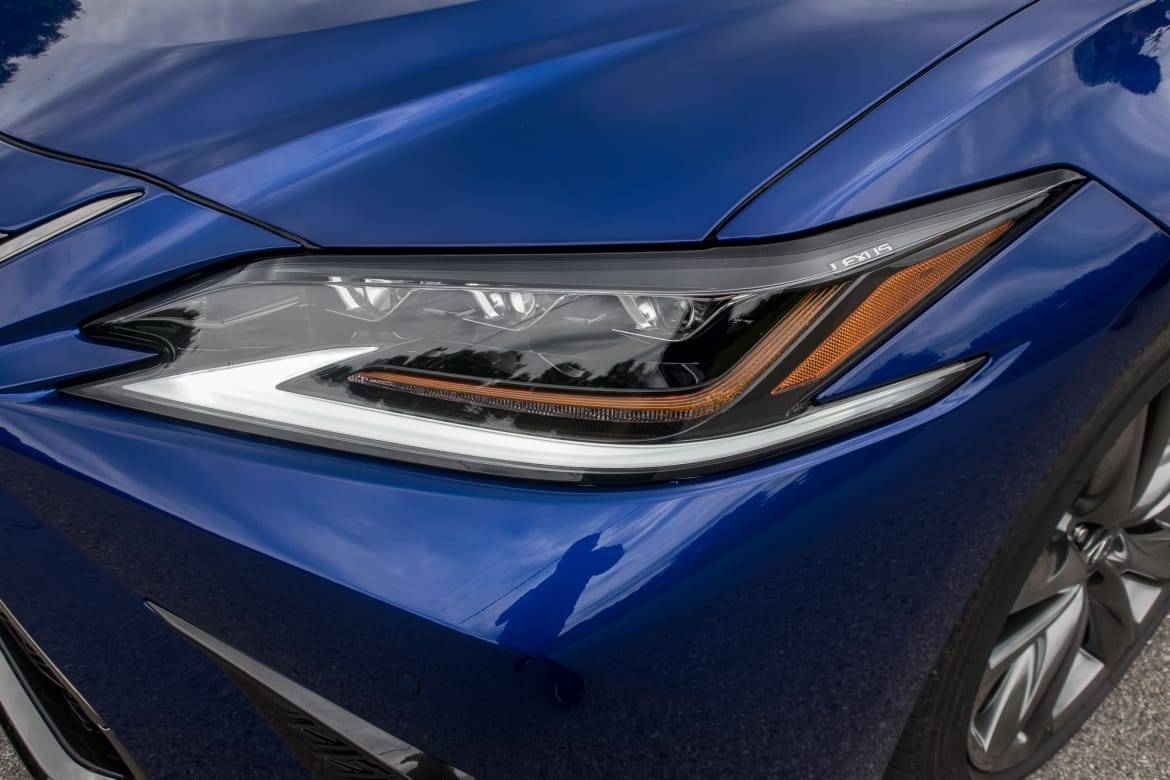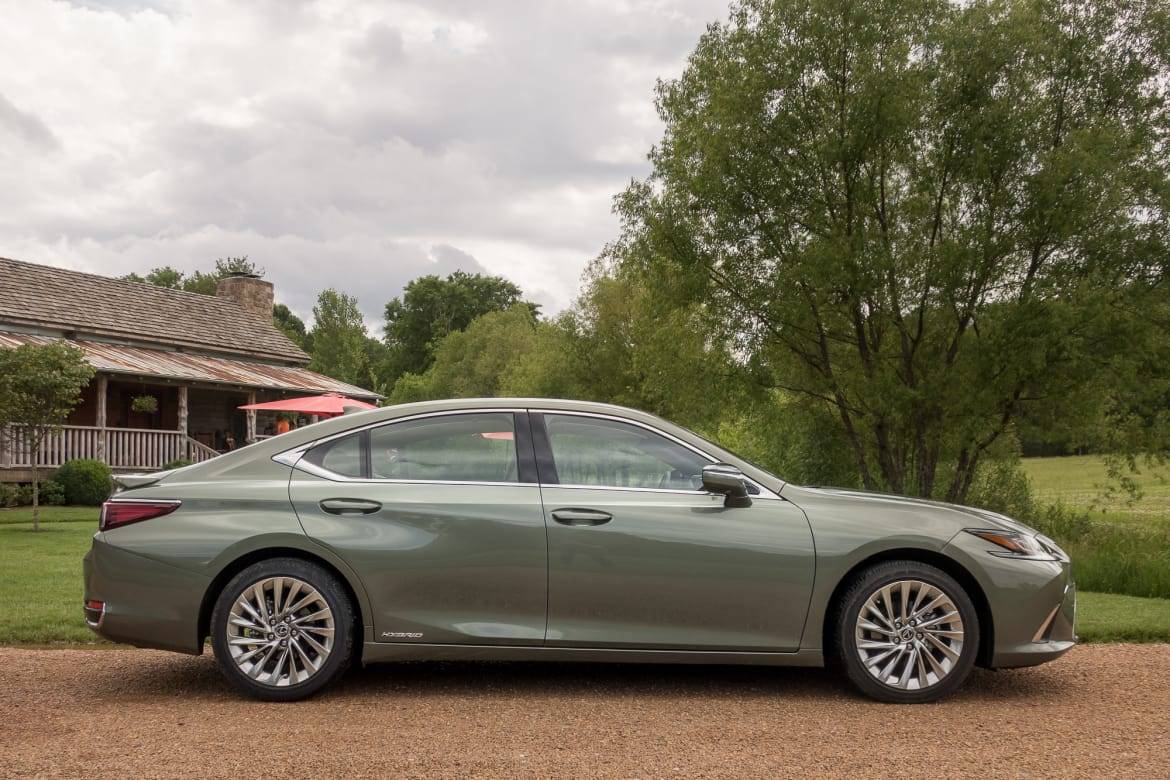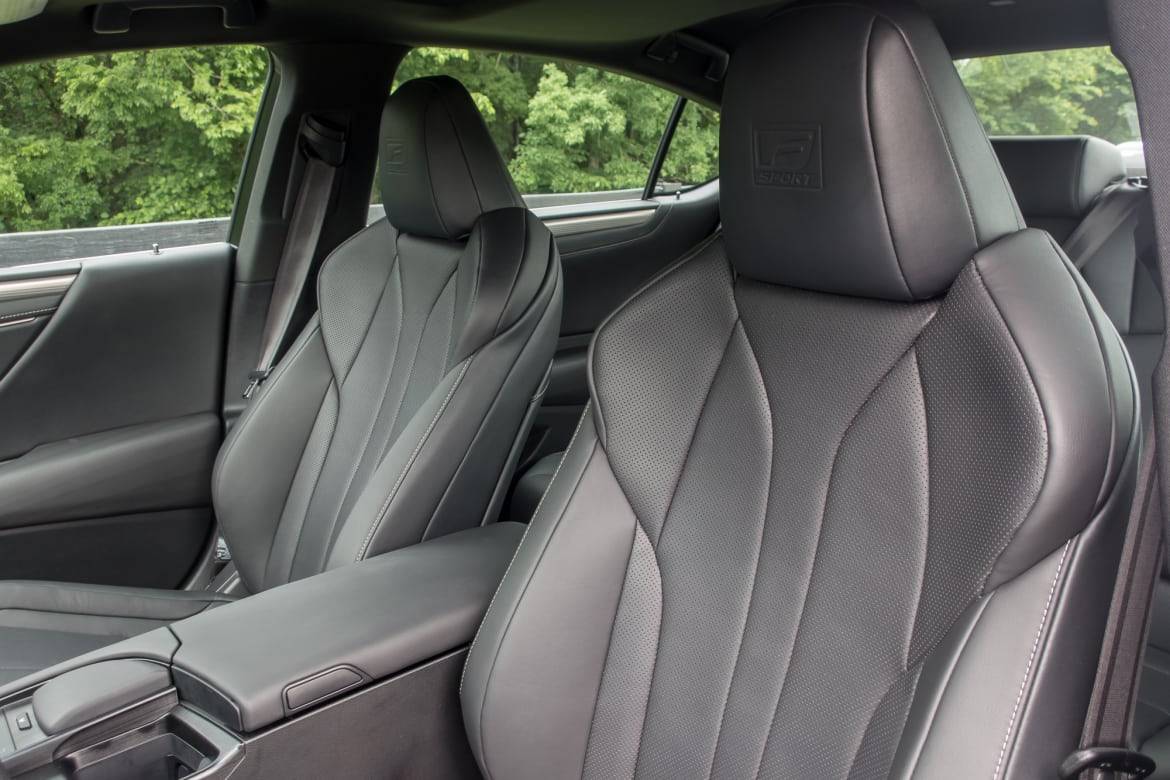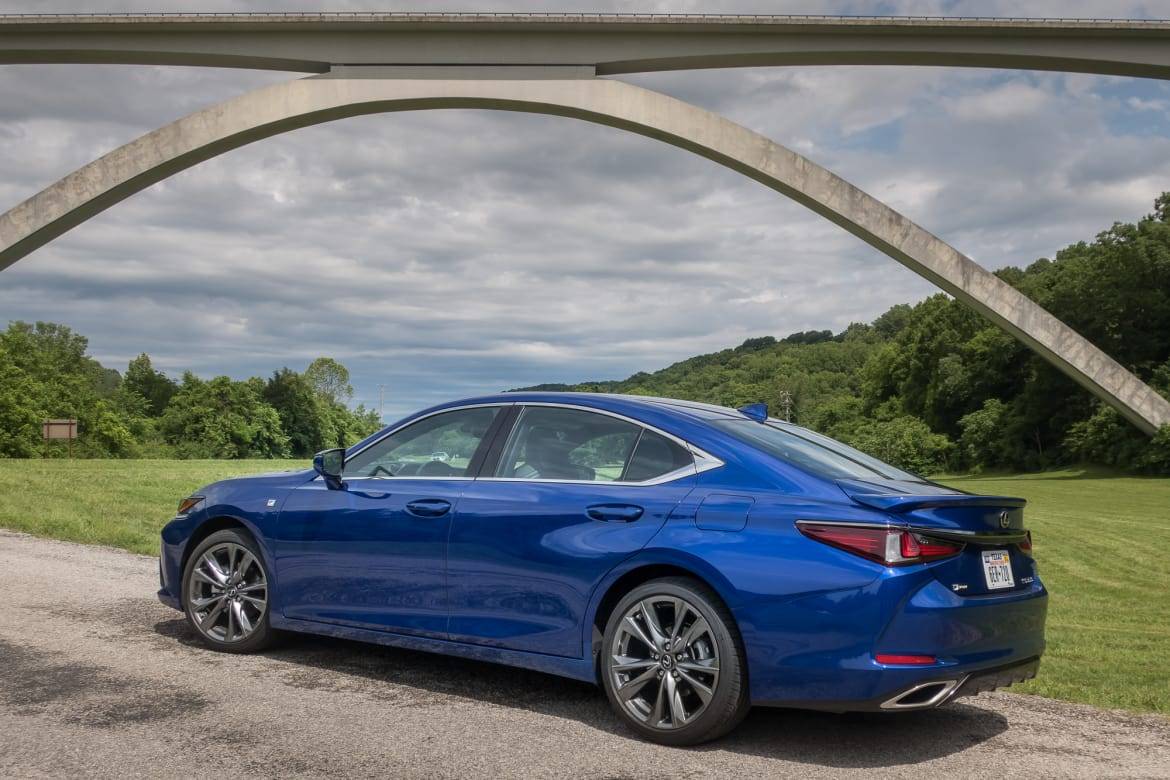
The Lexus ES sedan, along with the LS sedan, dates back as long as the Lexus brand itself, to 1989. Nearly three decades later, the ES is still kicking, but not well — the 2018 model proved the car was in dire need of an update.
Related: 2019 Lexus ES: More Sass, More Class
I wrote last year that I preferred the new 2018 Toyota Camry to a 2018 ES 350 even though the Camry cost about 10 grand less as tested. Luckily, both gas (ES 350) and hybrid (ES 300h) versions of the ES get a full redesign for 2019.
The changes are familiar; many of them echo the updates to the 2019 Toyota Avalon I tested earlier this year that improved it vastly over its predecessor. Would the ES make the same leap? I headed to a national media introduction Nashville, Tenn., to find out (per our ethics policy, Cars.com pays for its airfare and lodging at such automaker-hosted events).
How It Drives
Gone is the sedate, calculated look of the old car. It’s replaced by a heavy dose of Lexus’ signature spindle grille and an elongated profile that gives it sleeker proportions. One could look at the aggressive new styling and think that it’s going to be sporty; this was part of Lexus’ effort to remake the car as more of a sports sedan. But I didn’t end up buying it — this car is still destined to be a cruiser, which it’s great at, but it’s no sport sedan. There isn’t quite enough power, and even the F Sport version (a first for the ES) suffers from the same problem as the Avalon Touring, which also has the adaptive suspension. Even with the car cranked all the way up to the Sport Plus mode (unique to the F Sport), there isn’t enough differentiation, and though the ride is firmer, it doesn’t seem to pay real dynamic dividends.
The ES’ powertrains are mechanically identical to those found in the 2019 Avalon and Avalon Hybrid, which also share the ES’ global GA-K platform. That means the ES 350 features a 302-horsepower, 3.5-liter V-6 that makes 267 pounds-feet of torque and is mated to an eight-speed automatic. The Lexus ES 300h combines a 2.5-liter four-cylinder engine with a pair of electric motor/generators to produce 215 hp. A continuously variable automatic transmission is standard on the hybrid.
The updated ES rides more confidently and has significantly improved steering feel and feedback over the previous ES, a sloppy-driving car that drifted around on the highway and wallowed in corners. Despite a few unique suspension tricks and some tuning differences, the driving experience in both models of the ES is very similar to what you get in the Avalon, which is a good thing.
It’s not an identical experience, however. I noticed it the most under heavy braking when the ES remained firmly planted down to a stop, a circumstance under which the Avalon’s tail gets a little wiggly. Differences between the Toyota and Lexus may come from steps taken to increase the ES’ structural rigidity, including an added brace behind the backseats and additional structural adhesives and laser screw welds. For whatever good it might do, the added brace means the rear seats won’t fold down; all you get is a small center-seat pass-through that won’t accommodate an object as wide as a snowboard.
Both models come with front-wheel drive only, though the ES’ luxury competitors offer all-wheel drive. When I asked Lexus about this, representatives said that the matter was “under study,” but it’s a big omission, especially for those living in the northern part of the U.S.
It’s worth calling out the fuel efficiency of the ES 300h, which doesn’t have official EPA figures yet but which Lexus estimates as 44/45/44 mpg city/highway/combined, a serious step up from the previous generation’s 40/39/40 mpg. Mileage remains substantially more efficient than the gas-only ES 350, which for 2019 Lexus estimates at 22/33/26 mpg, itself an increase over the 2018’s 21/30/24 mpg EPA rating.
In the Cabin
Inside, there are big improvements to both the styling and materials in both the front and rear. It’s now a thoroughly modern cabin, with an available 12.3-inch multimedia display and plenty of charging options (including a pair of USB ports and a 12-volt port behind the center storage bin). Buyers who opt for the F Sport version are treated to a pair of excellent front sport seats.
Additional sound deadening throughout keeps the ES’ cabin serene, in both gas and hybrid guise. Hybrid models get even more sound deadening, including extra three-layered padding at the firewall that’s designed to keep out high-pitched noises from the electric components. It is effective: I didn’t notice as much whine from the electric motor, but a lot of unpleasant four-cylinder noise still comes through. Even the V-6 in the ES 350 sounds tame, and though F Sport models supposedly pipe in engine sounds to the cabin artificially, it didn’t register with me (even with the radio off).
Safety features have also gotten a bump. The ES comes with the Lexus Safety System Plus 2.0 which adds lane-tracing assist (an enhanced lane keep assist system that centers the car more accurately in its lane), low-light pedestrian detection, bicyclist detection and the ability to read road signs.
Multimedia Struggles
The 2019 ES fixes many problems that plagued the previous versions of the car, but one big problem remains unanswered: the multimedia system.
Besides the larger screen, the new system replaces Lexus’ mouselike controller with a touchpad. The touchpad isn’t an improvement; as in past Lexus vehicles, I just can’t use the system safely while driving. The menu structure is unintuitive, many common features are buried in submenus that require you to move the cursor long distances and the split-screen views often get jumbled up.
Lexus needs to take a cue from Apple CarPlay, which seems to work much better than the Lexus portion of the multimedia system. When activated, it uses the whole width of the screen and puts commonly used features as icons on the display. That makes it easier to get to the apps or functionality you’re looking for, which is a big part of making the whole kit and caboodle easier to use.
Apple CarPlay, Amazon Alexa Not Ready for Launch
There are caveats regarding both Apple CarPlay and the new Amazon Alexa connectivity when the ES launches. Lexus says that Apple CarPlay will be included initially on ES models equipped with optional navigation but not those without it until models built starting in October. With the car’s launch scheduled for September, that means there will be some models that come without it. A representative said the vast majority of cars will be equipped with navigation, and those without it will number in the single-digit percentages of the 50,000 or so ES sedans Lexus expects to sell in the first year (a little journalist math tells us that’s around 4,500 vehicles). Cars that come without Apple CarPlay cannot add it later. You’ll be stuck without it, so if you find yourself at a dealership and aren’t certain, test the system with your phone or look for the date of manufacture on a sticker on the driver’s doorjamb.
The Amazon Alexa integration also has a catch. For those who want to get the full use of the integration through the Lexus + Alex app (which is required along with the Lexus Enform app), it will be available only on Android phones as of launch. Lexus said the iPhone app won’t appear in the App Store until late 2018. Once the app is released for iPhones, the system will also need to be updated to get the integration to work fully. Lexus is not yet sure if the update will be over the air or if it will require a stop at the dealership. And remember: If you want to take full advantage of the Alexa capability, you’ll need an Amazon account with other subscriptions, like Amazon unlimited music.
Lexus also didn’t offer a timeframe for potential Android Auto integration, which remains a bummer.
Versus the Avalon and Luxury Competitors
I deemed the 2019 Avalon a “road trip hero,” but that title may already be ceded to the 2019 Lexus ES. Its incrementally improved ride quality and composure plus better cabin materials and safety features give it some clear advantages over the Avalon, not to mention that fact that the ES looks better, too.
Then again, the Avalon comes with Apple CarPlay standard, with no delay, and has a multimedia system that doesn’t make me want to punch a hole in the center console. And that’s enough to make me unsure of which I actually prefer out of the two.
Looking at the price difference between the two further complicates things. Lexus would only say that the ES 350 will have a starting price of around $39,000, with ES 300h hybrid trim models commanding a $3,000 premium over the gas-only versions. (Avalon Hybrid models are only $1,000 more than their gasoline counterparts.) This puts the ES in fairly close competition to the Avalon, which starts at $36,420 and tops out at $43,120 for Touring models. That’s not much of a gap, so it might just come down to what you find most important. The multimedia edge goes to Avalon, the luxury edge to the ES.
The ES has more value when you start to compare it beyond the Avalon. Its price fits in between the compact and mid-size luxury classes while providing nearly full-size cabin space. More size for less dollars is not a bad proposition.
The ES’ multimedia drawbacks aren’t novel; I’ve encountered them in other Lexus vehicles. But it sticks out more in the ES because the rest of the car is so dramatically improved. The 2019 ES is this one change away from getting a full-throated recommendation from me — it would be a big change, admittedly, but something needs to be done.
We’ll have more details on the pricing and technology updates for the ES 350 and ES 300h as we get closer to the car’s on-sale date in September.
Cars.com’s Editorial department is your source for automotive news and reviews. In line with Cars.com’s long-standing ethics policy, editors and reviewers don’t accept gifts or free trips from automakers. The Editorial department is independent of Cars.com’s advertising, sales and sponsored content departments.










































